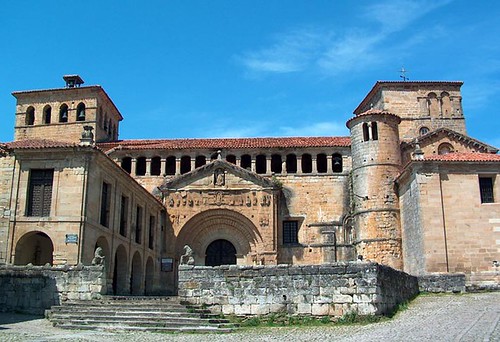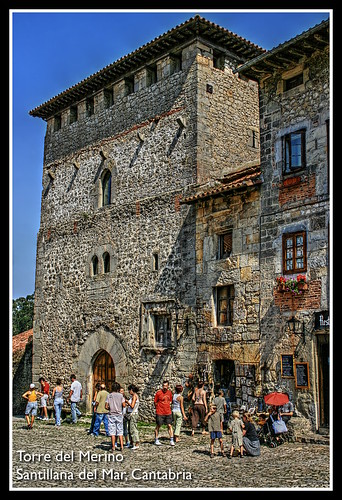
Walking around Santillana del Mar is a pleasure and even more, if possible outside the crowds that often occur during the summer months. A good time to come to this town, which the philosopher Sartre said to be «the most beautiful in the world» is in autumn and winter. In those short days when it feels is the true measure of the village, where the streets are occupied only by the inhabitants of the old houses of the village and by visitors who find this time the ideal time to contemplate the stones, coats of arms , mansions and palaces that have survived since the Middle Ages to today.

Although now a small village, Santillana del Mar was one of the most important centers of Cantabria to the point that was the capital of the Merindad of Asturias de Santillana.
It’s hard to get lost in Santillana del Mar, since it retains the structure of a town between the medieval and the Renaissance, which arose around the Collegiate Church of Santa Juliana and grew up drawing two parallel main streets and only joined together at this magnificent Romanesque building . But before the monks of Santa Juliana, these lands were inhabited by Palaeolithic man, they left their artistic mark on the walls and ceiling of the cave of Altamira.
However, the town of Santillana dates from the seventh and ninth when he founded the first monastery, where the relics of St. Juliana, hence were derived the name of Santillana. About the eleventh century monastery became collegiate. This building, although Romanic full, has had some extensions, so it seen in Renaissance and Baroque elements. The most remarkable thing about him is his cell, where you can see magnificent iconography of the capitals, which are shown as a summary of the main Romanesque ornamentation.
Between the late Middle Ages and the Renaissance, was built some of the most significant secular buildings of the town. Among them towers the Don Borja and Murphy, both of the fifteenth century. Also in this century is built Leonor de la Vega, mother of the Marquis of Santillana, combining Gothic and Renaissance elements. Very near this house is the palace of the Velarde, a Renaissance building located behind the collegiate church in the Plaza de Las Arenas.
In later times, as in the seventeenth and eighteenth centuries are other famous buildings of the town, as the House-palace Peredo Barrera, currently Caja Cantabria Palace or the Palace of the Valdivieso.
But, Santillana, especially, is a town for walking, to expound the view in the noble houses that have stood the test of ages with a great dignity.
Those visitors who have more time, they can stop some of the museums and exhibition halls which abound in the town. Among them, the Diocesan Museum Regina Coeli, whose headquarters is the former Dominican convent, a building 1592, which contains more than 800 religious works from different parishes in the region.
Other places you must stop is the Casa del Águila y la Parra, the sixteenth century and which houses various exhibitions of different nature or the house museum of the sculptor born in Santillana del Mar, Jesus Otero.
Near the center of town is also one of the major milestones of art of all time, World Heritage Site since the 70s: the cave of Altamira. Currently, visits to the original cave is restricted, but you can see all the grandeur of artists in the Paleolithic Neocave, integrated into the National Museum of Altamira.

Those traveling with children can also make a stop at the Zoo de Santillana, a place where different observing wild animals and domestic animals of the Quaternary.
Bon voyage!
Leave a Reply
You must be logged in to post a comment.
Recent Comments